-
31 January 2025 | Country Update
Maternity protection expanded to also cover miscarriages
7.3. Financial protection
Health coverage is almost universal in Germany and sickness funds provide a broad benefits package that includes sick pay as well as dental care, dental prostheses and orthodontics. Although considerable user charges apply in the form of co-payments, overall, private OOP expenditure on health is relatively low (see section 3.4 Out-of-pocket payments). According to Eurostat data, OOP expenditure was lower in Germany (12.5% of total health expenditure; 6th lowest) than in most other EU countries in 2018 (Eurostat, 2020a). Similarly, data from Germany’s Federal Statistical Office show that OOP expenditure as a share of total health expenditure increased from 12.7% to 13.3% between 2000 and 2018. In terms of sectors, the largest category of OOP expenditure in 2018 was associated with inpatient LTC (€14.5 billion or 27.8%), followed by pharmaceuticals (€10.4 billion or 20.0%), medical aids (€7.2 billion or 13.9%), dental care (€6.6 billion or 12.6%) and ambulatory LTC (€5.5 billion or 10.5%) (Statistisches Bundesamt, 2019c) (see section 3.4 Out-of-pocket payments). In terms of OOP spending measured as a percentage of total household consumption, available international data show that Germany, at 2.8%, is below the EU average of 3.3% (OECD, 2020b). According to the latest available national income and consumption survey data from 2013,[25] the average OOP spending on health as a share of total household consumption was slightly above 3% in 2013 with a 1.6%-points gap between households in the poorest quintile (2.2%) and households in the richest quintile (3.8%) (Siegel & Busse, 2018).
In 2004 OTC pharmaceuticals were excluded from the SHI benefits catalogue and a co-payment of €10 for the first ambulatory care physician visit in a quarter (Praxisgebühr) was introduced. The effects of the introduction of the Praxisgebühr and its subsequent abolition in 2012 resulted in an increase in the share of OOP spending on ambulatory care, which doubled from 6.4% in 2003 to 13.8% in 2008 and then fell back to 6.5% in 2013. Between 2003 and 2008 this share increased by more than four times for the poorest income quintile (from 4% to 18%). It was also pronounced for the second and third quintiles, but much less for the two richest quintiles (Siegel & Busse, 2018).
In 2013 an estimated 2.4% of households spent more than 40% of their capacity to pay on health care. This is a relatively low proportion of households with “catastrophic OOP payments” compared to other EU countries (Fig7.3). Catastrophic spending is more highly concentrated among households with people over 60 years of age and in households receiving social benefits. The increase in co-payments and user charges in 2004 also contributed to an increase in catastrophic OOP payments amongst low income households. Households in the poorest quintile accounted for more than 50% of all households with catastrophic spending in 2003, rising to 70% in 2008 and falling slightly to around 63% in 2013. In 2013, 4.6% of households in the poorest quintile experienced catastrophic spending, rising to 11% in 2008 and falling to 7.4% in 2013 (Siegel & Busse, 2018).
Fig7.3
It is important to highlight that the level of OOP spending alone does not give a comprehensive assessment of financial protection. For example, it is possible that a person may forgo needed care because the service is not included in the benefits basket or considerable user charges apply. So even though no OOP payments are made, fair and equal access to care is not provided. However, as shown in section 7.2 (Accessibility), Germany has good coverage and accessibility, and unmet need for medical care is driven less by financial reasons than by other factors such as waiting times. In fact, the share of people reporting unmet needs for a medical examination specifically due to the reason of cost was only 0.1% in 2018 (Eurostat, 2020a).
Although co-payments are comparatively low in Germany, the legislature has implemented measures particularly designed to protect low-income sections of the population and the chronically ill from excessive financial burdens. This means that patients whose co-payments exceed 2% of their gross household income are exempted from further co-payments. The threshold in the case of patients with a chronic disease is 1%. Furthermore, children under 18 years of age are generally exempt from co-payments (see section 3.3.1 Coverage). Other recent legislation was implemented to close coverage gaps and strengthen financial protection. Low-income self- employed individuals are one population group with a higher risk of being uninsured since it can be difficult for them to afford SHI contributions or PHI premiums (see Box3.1). Up to January 2019 the self-employed paid an SHI contribution based on an expected minimum income of €2284 per month (independent of their actual income), which was found to be unmanageable for a large proportion of small business owners. In response, the SHI Contribution Relief Act (2018) halved the reference amount used to calculate the minimum contribution. Moreover, the Strengthening Appointment Service Points and Care Delivery Act (2019) expanded SHI benefit coverage by adding (1) the costs of cryopreservation for young adults suffering from cancer and (2) pharmaceuticals for the prevention of HIV infections (“pre-exposure prophylaxis” – PrEP) for people with an increased risk of infection.
Box3.1
- 25. Data for 2018 were published in July 2020, but have not yet been analysed in terms of financial protection. ↰


